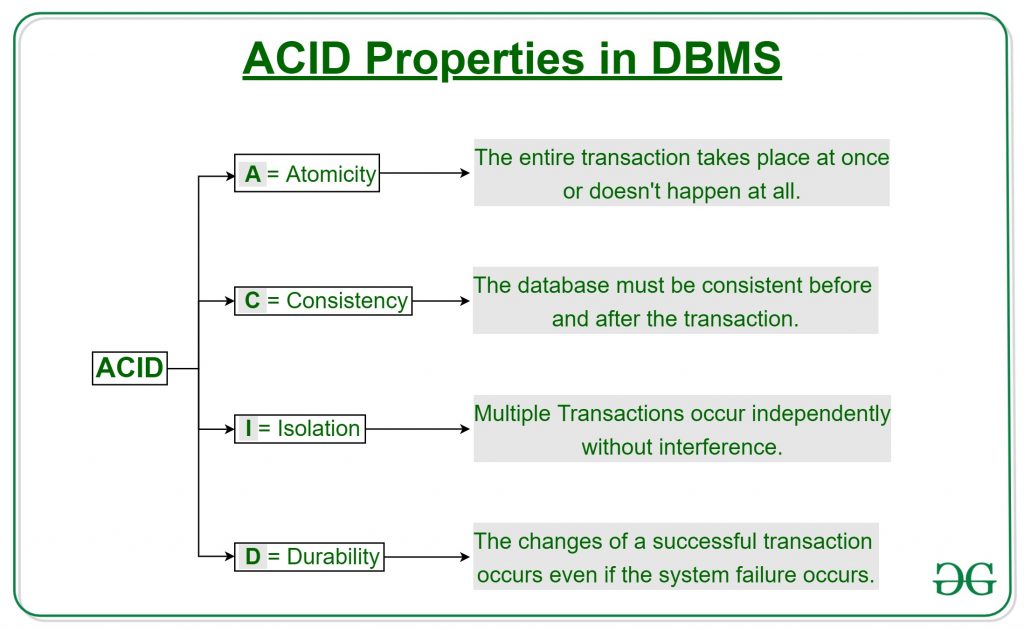
By virtue ofĬonsistency (explained above), a partially completed transaction won't be This by storing uncommitted transactions in a transaction log. It will return to a consistent state when it's restarted. Hence, even if the database server is unplugged in the middle of a transaction,
Durability guarantees that the database will keep track of pendingĬhanges in such a way that the server can recover from an abnormal termination. The second user would then find out that the customer hadīeen deleted, which is much better than losing changes without knowing about it. User would have to wait for the first user's deletions to complete before In a blocking transaction scenario, the second Suppose a user deletesĪ customer, and before the customer's invoices are deleted, a second user In a different mode, a transaction sees obsolete data (from the state theĭatabase was in before the previous transaction started). ForĮxample, in one mode, a transaction blocks until the other transaction finishes. Transaction isolation is generally configurable in a variety of modes. Isolation keeps transactions separated from each other until they're finished. That meant leaving its invoices, and other associated records stranded. Properly configured database wouldn't let you delete the customer record, if Instance, when you delete a customer record, you should also delete all of thatĬustomer's records from associated tables (such as invoices and line items). If one part of the transaction fails, all of the pending changes are rolledīack, leaving the database as it was before you initiated the transaction. Leaves your database in a half-finished state. Consistency guarantees that a transaction never. Situations like bank transactions where transferring money between accountsĬould result in disaster if the server were to go down after a DELETE statementīut before the corresponding INSERT statement. With atomicity, these statements are treated as a single unit,Īnd thanks to consistency (the C in ACID) there are only two possible outcomes:Įither they all change the database or none of them do. Suppose you define a transaction that contains an UPDATE, an INSERT, and aĭELETE statement. 
Atomicity is an all-or-none proposition.Here is a quick description of what it means to be ACID compliant:

That business professionals generally look for when evaluating databases. PostgreSQL and MySQL, which is somewhat dated.ĪCID (an acronymn for Atomicity Consistency Isolation Durability) is a 'keyword' I've reproduced only the section on ACID, leaving out the comparison of Database: Transactions: ACID Compliance Database: Transactions: ACID Compliance The following is taken from PostgreSQL vs.






 0 kommentar(er)
0 kommentar(er)
